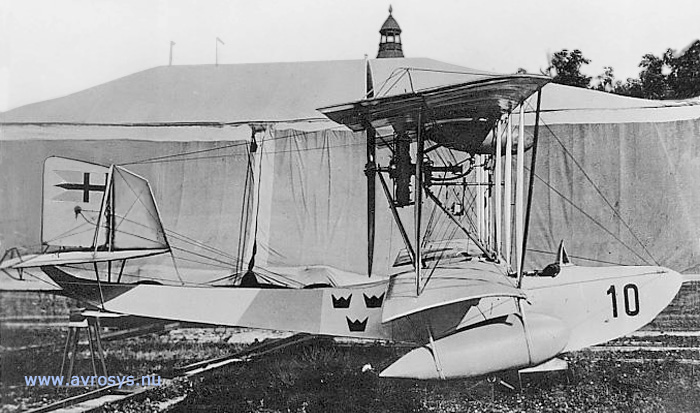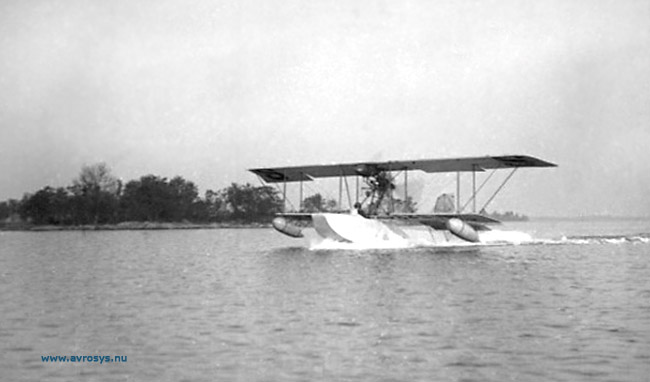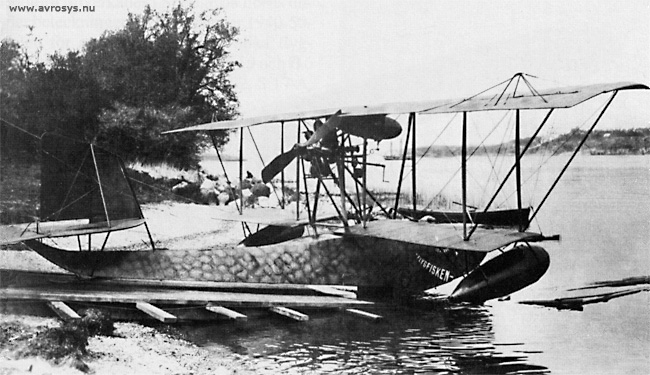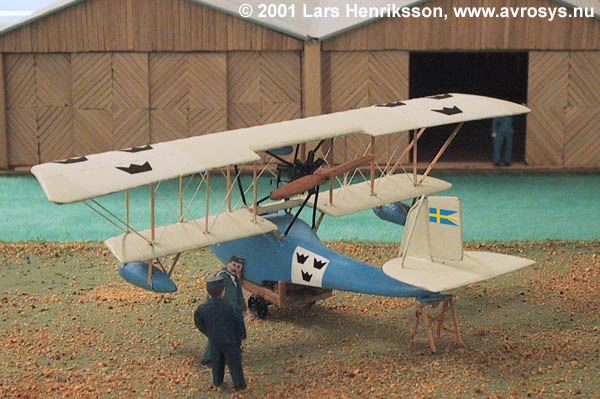|
|
||||
|
Donnet-Lévêque (Reconnaissance Seaplane and Trainer, 1913-1918) |
||||
|
|
Page 1 (1) |
|||
|
|
||||
|
|
||||
|
This design had a pushing propeller with
the engine over and behind the pilot. In case of engine failure, the
pilot had the possibility to try to re-start the engine by hand power
after he had made an emergency landing.
Another Donnet-Lévêque was bought 1913 by the famous pioneer aviator Carl Cederström and his company Skandinaviska Aviatik AB, but was the same year sold to the Navy. It got the number ”L II”. Cederström had named the aircraft Flygfisken (the Flying Fish). It kept this nickname during its whole service in the navy. This aircraft had a somewhat stronger engine (80 hp Gnome). L II was first stationed in the Stockholm area, but was also used in the naval bases at Karlskrona and Gothenburg until 1918. The aircraft is preserved at Flygvapenmuseum, but not in exhibition condition for the present.
Note
the "S" on each wing of the aircraft on the photo at top. An early type
of Swedish national marking. I was soon changed to the Swedish three
crowns. Some facts of the aircraft designer François Denhaut and the Donnet-Lévêque company 1912 was the year where the design of seaplanes gathered speed. Curtiss in the USA was the most important pioneer, but he was soon challenged by the French pilot and aircraft designer François Denhaut (1877-1952). Denhaut had from the beginning the idea to adapt wings to a boat-like hull, while Curtiss began with float-planes. Denhaut’s first design from 1911 was not successful, but he improved it quickly. He now made the hull rectangular in shape and thus flat-bottomed, while the first try had been rather cranked. Floats were fitted at the ends of the lower wings to avoid these to plunge in the water and a hinged landing gear was installed. The latter made this machine the first amphibious aircraft in Europe. Denhaut presented his type B at a contest of the hydroplanes of the French Navy in 1912, but at this time the navy rather prefers float-planes to flying boats. Denhaut needed funds for his developing work and got help from the
engineer and financier Jerome Donnet and from the automobile engine manufacturer Henri
Lévêque. Together these two men established the aircraft company with
carried their names. From now on, the seaplanes designed by Denhaut got
the name Donnet-Lévêque, which on July 25th 1912 got a patent for the flying-boat. The development continued with Denhaut as chief designer
and the company produced well over 1000 flying boats during the WWI.
Denhaut left Donnet-Lévêque in 1919 and continued with varying success to work
for the aviation industry.
Photo at top: L II at the naval shipyard in Stockholm, not far from the dry dock were the man-of war Vasa now rests. Around and over the dock the large Vasa Museum is built. Vasa was built to be the mightiest and most prestigious man-or-war of the Baltic Sea. But the proud ship capsized on its maiden voyage in 1628. It was salvaged and reached the surface again in 1961. Now it is one of the most visited tourist attractions in Sweden. The boat is now marked with the code "10". The aircraft is preserved and belongs to Flygvapenmuseum (Swedish Air Force Museum). When this is written, the aircraft was not on display. Length: 7,9 m. Span: 11,6 m. Height 2,9 m. Maximum take-off weight: 560 kg. Max. speed: 108 km/h. |
|
|||
|
|
||||
|
L I or LII taking off |
||||
|
|
||||
|
|
||||
| L II during summer 1913 before it was bought by the Navy. You can see the name Flygfisken painted at the bow. Note the fishlike painting on the fuselage. | ||||
|
|
||||
|
|
||||
|
Diorama displayed at Flygvapenmuseum (Swedish Air Force Museum) |
||||
|
|
||||
|
|
||||
| © Lars Henriksson |
Updated 2012-03-15 |
|||
|
Custom Search
|
||||



